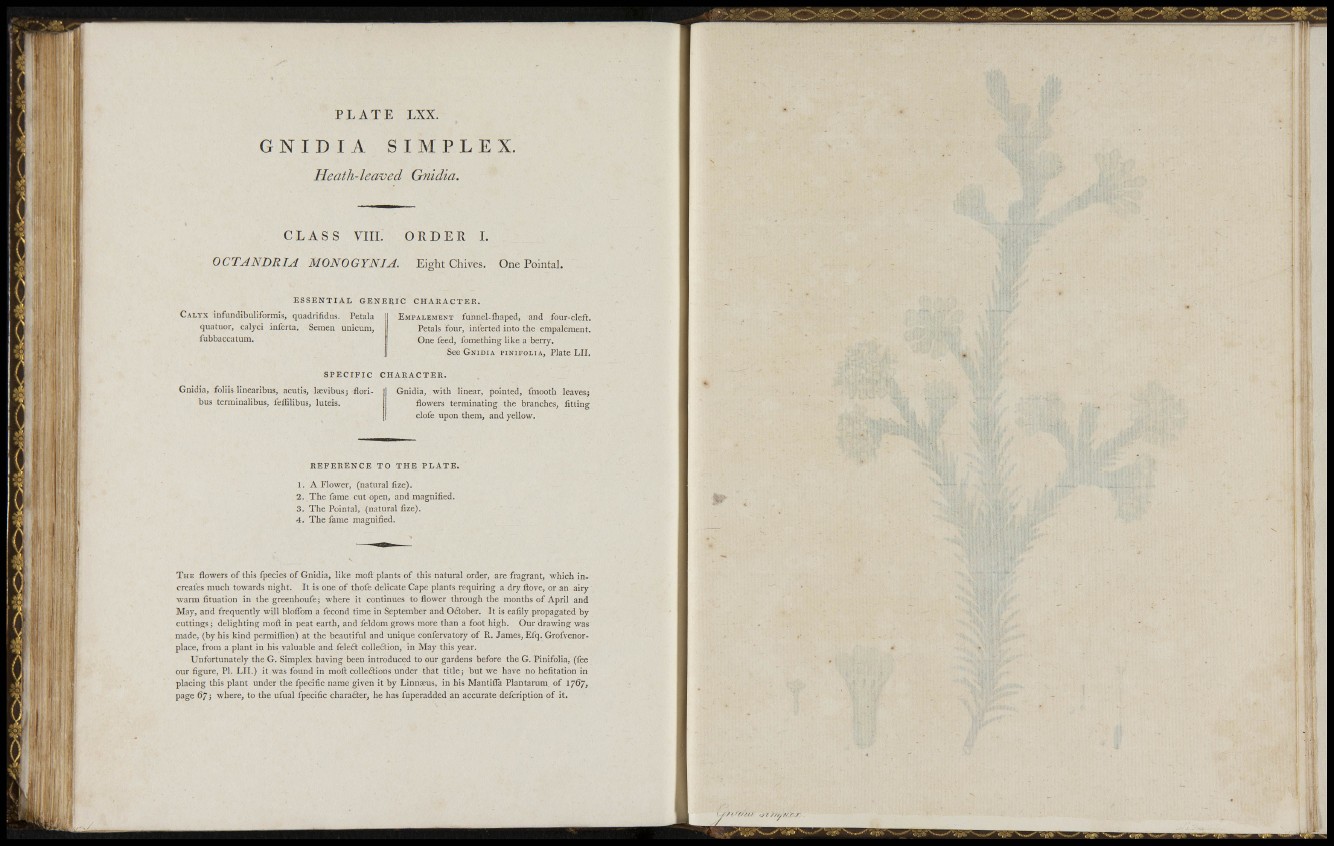
!i| ;]í
!;• ;,ií!
P L A T E LXX.
G N I D I A SIMPLEX.
Heath-leaved Gnidia.
C L A S S yilL ORDER L
OCTANDRIui MONOGYNIA. Eight Chives. One Pointal.
E S S E N T I A L GENERIC CHAKACTEK.
C A L Y X infandibuliformis, quadrifidus. Pétala
quatuor, calyci inferta. Semen unicum,
fubbaccalum.
E M P A L E M E N T funnel-fliaped, and four-cleft.
Petals four, inlerted into the empalement.
One feed, fomething like a berry.
See G N I D I A PINIFOLIA, Plate LU.
S P E C I F I C CHARACTER.
Gnidia, foliis linearibus, acutis, loevibus; floribus
terminalibus, feffilibus, luteis.
Gnidia, with linear, pointed, fraooth leaves;
flowers terminating the branches, fitting
clofe upon them, and yellow.
R E F E R E N C E TO THE PLATE.
1. A Flower, (natural fize).
2. The fame cut open, and magnified.
3. The Pointal, (natural fize).
A. The fame magnified.
li^iil.
;i m
1 4 ' $
r i
THE flowers of this fpecies of Gnidia, like moft plants of this natural order, are fragrant, which increales
much towards night. It is one of thofe delicate Cape plants requiring a dry fi;ove, or an aity
warm fituation in the greenhoufe; where it continues to flower through the months of April and
May, and frequently will bloifom a fécond time in September and OCtober. It is eafily propagated by
cuttings; delighting moft in peat earth, and feldom grows more than a foot high. Our drawing was
made, (by his kind permiffion) at the beautiful and unique confervatory of R. James, Efq. Grofvenorplace,
from a plant in his valuable and feleft colleâion, in May this year.
Unfortunately the G. Simplex having been introduced to our gardens before the G. Pinifolia. (fee
our figure, PI. LIT.) it was found in moft colleftions under that title; but we have no hefitation in
placing this plant under the fpecific narae given it by Linna-us, in his Mantifla Plantarum. of 1767,
page 67; where, to the ufual fpecific charafter, he has fuperadded an accurate defcription of it.
ISf
• Ï • iT : ' .
^/('(/¿t/ -ji//,yf/:r.r
il
f